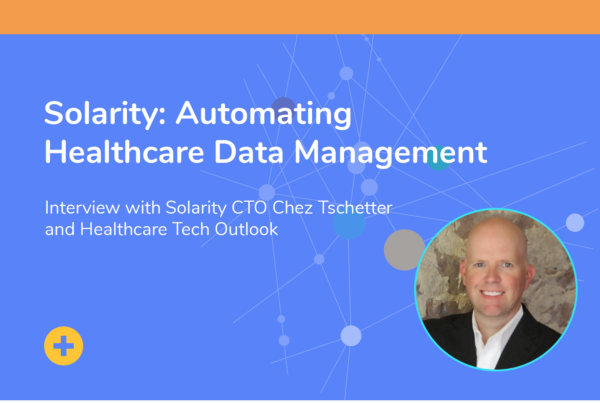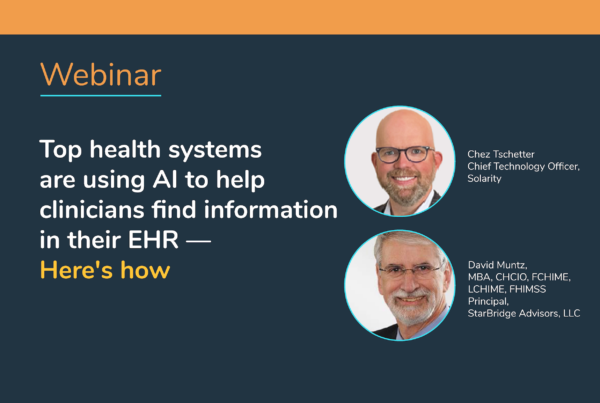Solarity was featured on the Lyniate blog. This full text of this piece can be accessed here.
The healthcare industry is generating data faster than ever, with approximately 30% of the world’s data volume coming from healthcare. By 2025, the compound annual growth rate of data for healthcare is estimated to reach 36%. That’s 6% faster than manufacturing and 10% faster than financial services.
To put this massive increase of data into perspective, the typical healthcare system receives clinical information from more than 1,000 different sources every 48 hours.
While data represents a treasure trove of opportunity for healthcare, it also creates huge challenges:
- Increased stress on staff: The tsunami of data can be a stressor on clinical staff. As data volume increases, so do requirements for sorting, analysis, and integrating. This creates additional workload for an already overburdened staff.
- Higher costs: More data generally leads to higher costs, specifically staffing costs, because of the time and effort needed to process data effectively and efficiently.
- Cumbersome data collection processes: Legacy or outdated data collection processes can limit the ability to harvest data. This can lead to skepticism among clinical staff about using data perceived as inaccurate, and to poorer patient outcomes.
- Data quality — and therefore care quality — errors and concerns: Many hospitals rely on manual analysis to organize the influx of patient data. Unfortunately, this increases the risk of errors in data sorting and integration, which can jeopardize patient safety and care quality overall.
These obstacles can be eliminated by leveraging technology solutions that collect and analyze ever-increasing amounts of data more efficiently, and then deliver it to the right people. In fact, this is the primary goal of the Solarity and Lyniate new strategic partnership. The partnership enables hospitals and health systems to process all data, digital or unstructured, to be indexed and delivered to electronic health records (EHRs).




